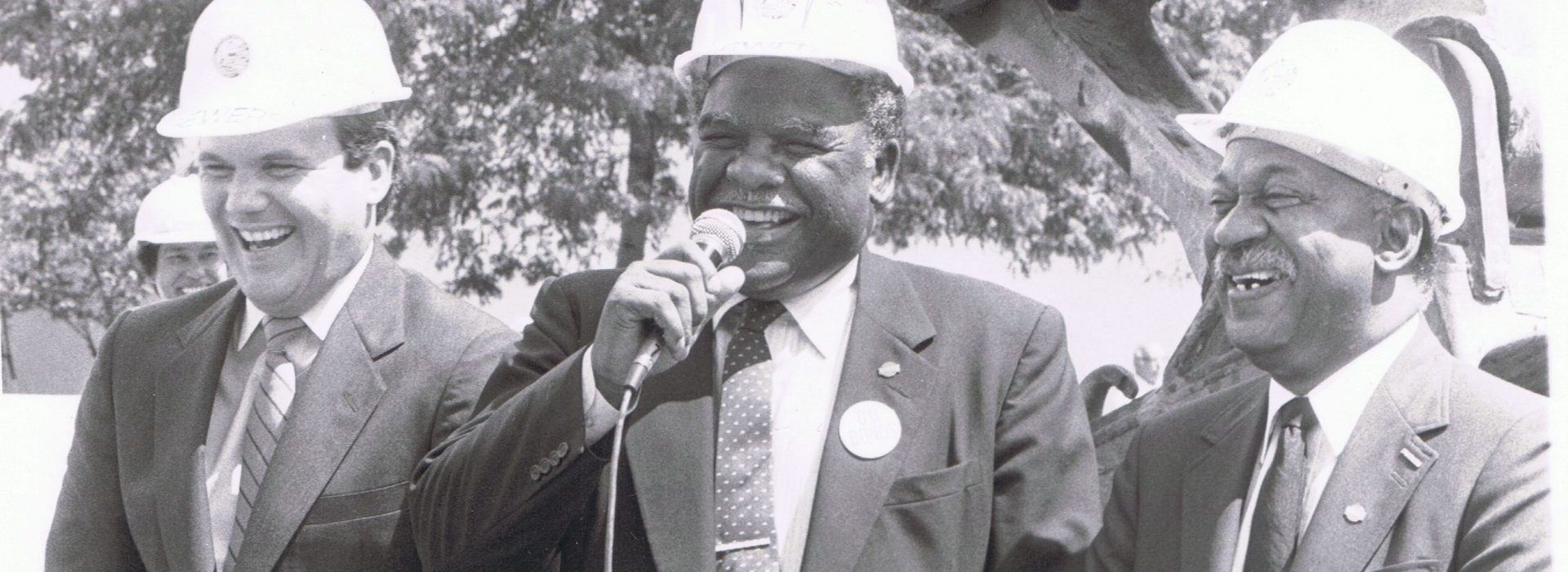The Obsidian Collection is an initiative that seeks to enlighten present and future generations by preservation and dissemination of images of Black life sourced from Black legacy newspapers and Black photographers.
All too often, Black newspapers were the only sources that informed and discussed issues, including racism, political rights, family and social advances, pertinent to Blacks. The origin of Black newspapers in the United States may be traced back to 1827 when editors & proprietors Samuel Cornish and John Brown Russworm published the first African-American periodical, Freedom’s Journal.
Since then, numerous Black newspapers have been published. The numbers of these Black publications grew exponentially with The Great Migration, a mass migration of Blacks from the American South to North, Midwest and West, in hopes of better opportunities and means to improve their lives. This movement lasted from 1916 until 1970 and as many as six million African-Americans undertook this migration.
As these people settled into more urban areas throughout the United States, African-American newspapers were created within practically every major city that had a significant Black population. For almost two-hundred years, Black newspapers have existed and a number of them have been highly successfully since their inception. These newspapers include the Baltimore Afro-American, Carolina Peacemaker, The Chicago Defender, Florida Star, Indianapolis Recorder, Los Angeles Sentinel, Michigan Chronicle, Milwaukee Courier, Mississippi Link, Monroe Free Press, National Association of Black Journalists, New York Amsterdam News, Pittsburgh Courier, Sacramento Observer and Washington Informer.
There have been trials faced by Black newspapers, notably, lack of financial support from advertising. However, they had experienced growth, expanding to include non-Black subscribers and readers, institutions and organizations. Yet like a number of their media counterparts, Black newspapers have especially suffered in the 21st century due to the advances of technology. The internet’s offering of free news, content and inexpensive advertising has drastically impacted Black newspapers. Quite a number of them either merged, published less often or shut down.
As of 2018, there are approximately two-hundred Black newspapers in more than one-hundred and fifty cities still publishing. Cities which have a large Black presence often have more than one Black newspaper. They are still available for subscription as well as from newspaper vending machines. Many of these have their own website and internet presence. Additionally, there other Black news platforms, including Black Voices, Good Black News, The Griot and The Root which have emerged.
Accordingly, the Black press was and is essential in relaying the countless topics, presented from a Black perspective, that are unique in their impact on and influence in the Black community.
The Obsidian Collection educates and empowers the Black community, especially the Black press, by digitization of its content. It can also record material onto microfilm as well as convert it from that media format. By making this material available to the public, the Collection actively seeks, according to the Democracy Fund website, “to strengthen Black press … establishing online and physical places … and creating community amongst the diverse ecosystem of Black-led media outlets.”
It is imperative that the immense documentation of Black life captured by the Black press is preserved, as much of it is endangered due to disintegrating and presumed diminished value. In many instances, these newspapers are the primary, and in some cases, only, physical records that detail the trials and triumphs of Blacks locally and nationally. It should be emphasized that along with the content that was featured in the pages of a Black newspaper, often there are countless images in an institution’s archives that did not make it to publication. These too are of great cultural value.
In their valiant effort to preserve, protect and promote Black culture, the Obsidian Collection desires to form, as its website offers, “exclusive partnerships with African-American newspapers to stabilize archive collections and share them with the world by providing the team of archivists to get the job done. Newspapers still operating will pledge a first-right-of-refusal to us if they decide to sell their archives and agree to revenue shares for the selected images that will require fees for use.”
As an African-American, independent entity, the Collection is comprised of historians and professional archivists whose mission is to accurately curate its archives. Supplementing the physical archives are its digital archives, which is primarily composed of two factions: Obsidian Images and Obsidian Center.
The Obsidian Images website, according to the Collection’s site, is “a portal for photojournalists to post their images for world viewing and limited-royalty use. Participating brings not only awareness of private collections, but an additional revenue stream to the owners of the collections. Through this portal, the Obsidian Collection hosts images, film and other media, providing a safe and secure online repository to store and preserve the history of our communities.”
The other component, the Obsidian Center website, is focused on the actual specialized services it offers. As referenced on its site, it ‘is a detailed description of our digitization and event planning services. We work with organizations, schools and archives to bring existing collections to the world for viewing. We work with existing teams or bring our own. The goal is to preserve the archives in place while making the collections’ viewing available to the world.”
The Obsidian Collection is profiled on Google Arts+Culture, where nine of its stories are featured online as digital exhibits. These exhibits are The Chicago Housewares Show of 1959; The Chicago Defender’s New Headquarters; Mostly Men and Money Maxwell Street; Fred Hutcherson, The Self-taught Aviator; Breadbasket and the 1968 Black Christmas Parade; Outdoors in Chicago, Joe Louis; Outside the Ring; Harold Washington, the First Black Mayor of Chicago and Hot Fun in The Summertime.
